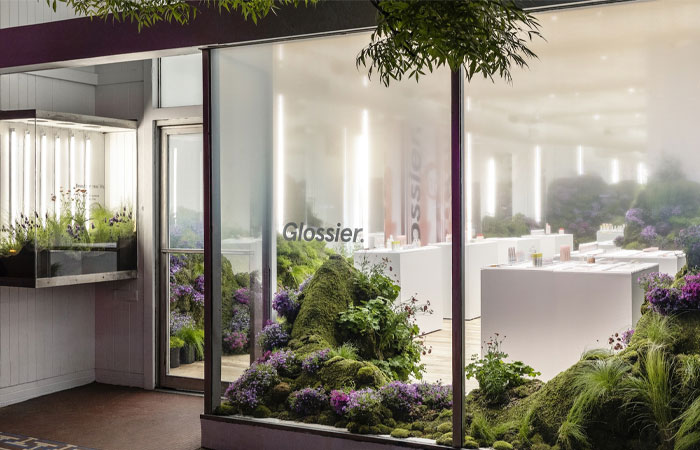Winning in 2020
Whilst it may not feel that there has been much to celebrate this year, there are still a few out there in the world of architecture and design who have something to shout about. It’s perhaps not too much of an overstatement to say that anyone managing to complete projects in 2020 deserves an award, but as is customary at the tale end of the year, there has still been opportunity to congratulate those who have worked on some of the very finest and most ambitious creations witnessed in the calendar year.
After years of rigorously assessing entries from practices spanning the globe, the Dezeen Awards and the Restaurant and Bar Design Awards have established themselves as the yardsticks for the very best international creative output. Both are significant dates in the annual calendar, eagerly anticipated by those who enter their projects and those on the hunt for innovative design. And although there have certainly been less trade shows, product launches, meals in restaurants and social gatherings in bars, the honours list spread across both sets of awards is evidence that the design world hasn’t gone on permanent hold.
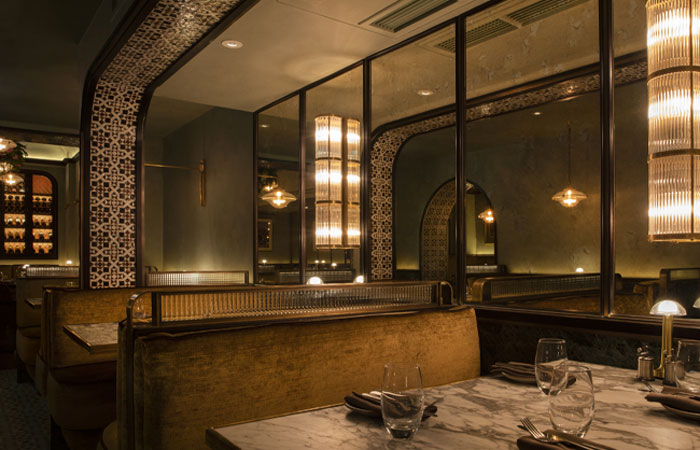
In actual fact, the Restaurant and Bar Design Awards highlight that there is much to be excited about when it comes to planning dining experiences for 2021, with every single entrant oozing with style and screaming out for visitors to come and immerse themselves within. The awards span numerous categories as well as regions, with a notable number of UK-based spaces. One of the standout projects from these shores is Norma by Rosendale Design, although rather ironically, the restaurant specialises in Sicilian cuisine. It was awarded the UK Surface Interiors prize for its richly layered design, sumptuous colour palette and sensitive selection of materials, which have Moorish design influences that one might expect when eating such exquisite Mediterranean food.
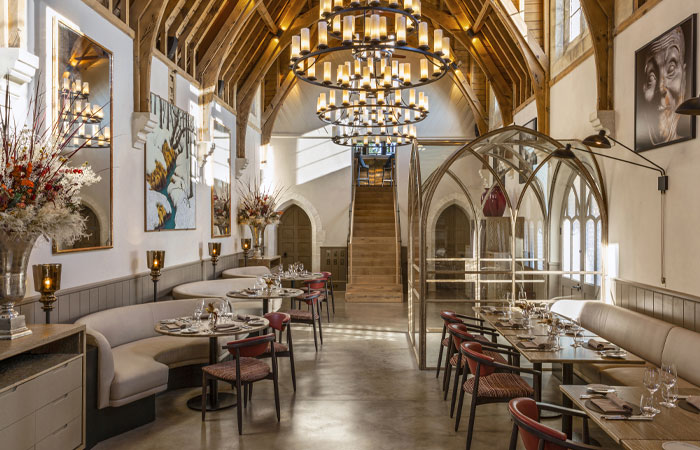
The Clockspire, a former 19th Century school found in Sherborne, was given two accolades, namely the Heritage Building and the Overall UK Restaurant award. This modern restoration by Studio Indigo is sympathetic to the original features of the building such as the exposed curved timbers that support the ceiling, which have been cleverly mirrored in the oak framework of the small but visible entrance lobby. Conjoining lancet window style frames in this way allows the separation of this important space without dominating or taking away from its fine surroundings and creates a link to the original arches found inside and outside the building. The honour of Overall UK Bar went to Bryan O’Sullivan for the Berkeley Bar & Terrace, which also scooped the Luxury and Murals & Graffiti category prizes. The latter – something which we’ve noted as a growing trend in interiors over the past 12 months or so – is a striking hand painted piece by New York artist TM Daly that spans the curved wall of the beautiful but secluded pink Snug space. The space is abound with curved forms and custom made furniture but it’s the materiality of the buildings interior that really steals the show. And the leading character in this interiors narrative is the exquisite walnut wood. Salvaged from a 400-year-old tree that fell in the great storm of 2007 on the Fulbeck estate, the unique and ancient grain of the wood can be seen throughout the space having been transformed into veneered panels.
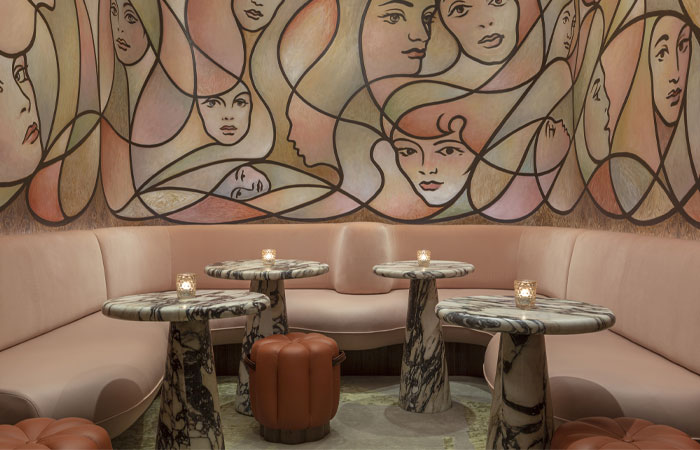
Outside of the UK there are two projects that were singled out for very special praise and although both hail from China, their aesthetic styles could hardly be any more different from one and other. The INNS Whiskey Bar, which was deemed the Standalone and Overall Bar winner, is small in scale (150m2) but big in ambition. Wooten Designers took their cues from the drink the bar serves and wrapped the interior in gold leaf and honey shades that glow like the copper stills ordinarily used to make spirits. The curved walls emphasize this aesthetic but perhaps also offer one of the few linkages to the Overall Restaurant winner Garden Hotpot, in that they both share a biophilic property. That said; Garden Hotpot takes this far further, instilling biophilic principles throughout its design, something that was recognised by the judges who also awarded it the Biophilic Design Category crown. Set in a forest, the snaking platform by MUDA-Architects is flanked by lily-padded water on one side and pine trees on the other – with not a single tree felled during its construction.
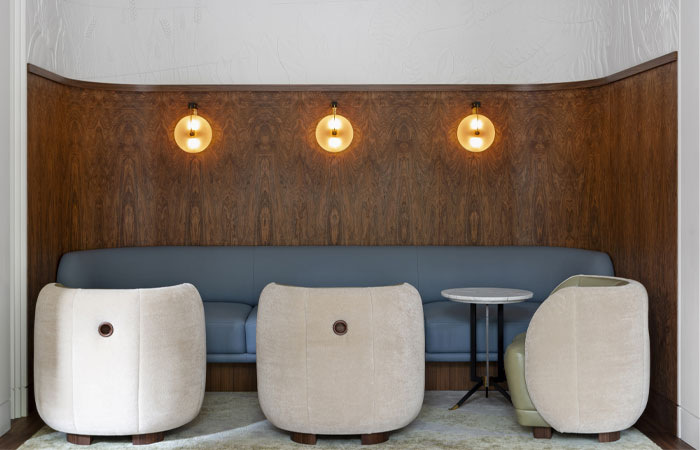
The Dezeen Awards further suggest that the principles of biophilic design are fast becoming universally integrated in the practice of designers and architects. Take the Infrastructure Project winner Cycling Through the Trees by BuroLandschap and De Gregorio & Partners for Visit Limburg.

The 700-metre-long cycle path, which rises up to 10m at its highest, is designed to blend in beautifully with its wooded surroundings whilst allowing users a unique view of the tree canopy and in fact, shares a similar curved form to that of Garden Hotpot. The Red Roof by TAA Design could easily have swapped red for green in its title as the urban roof setting is specifically designed to grow plants.
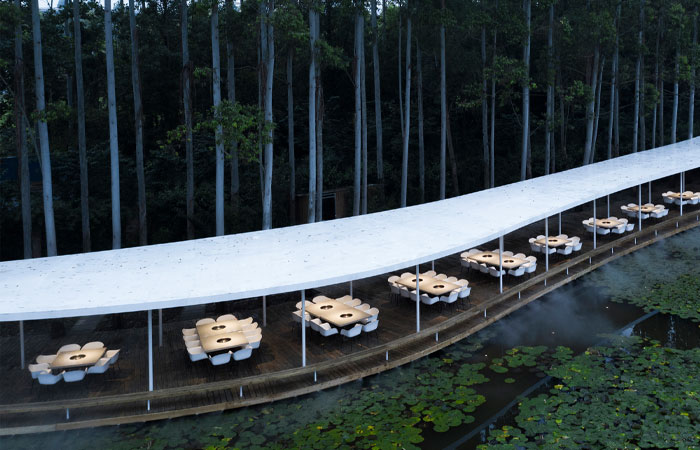
A series of courtyards and stepped rises finished in red plaster offer the residents pathways and seats from which they can work on the raised beds, as a community; sharing in the work and the fruits of their labour. This connecting of people and people with nature helped the design to pick up the Rural House if the Year and Architecture Project of the Year, something that the judges stressed it was fully deserving of:
“Small projects like this one show that great design can be made available to ordinary people. It is a small, humble gesture – that has a very powerful reach.”
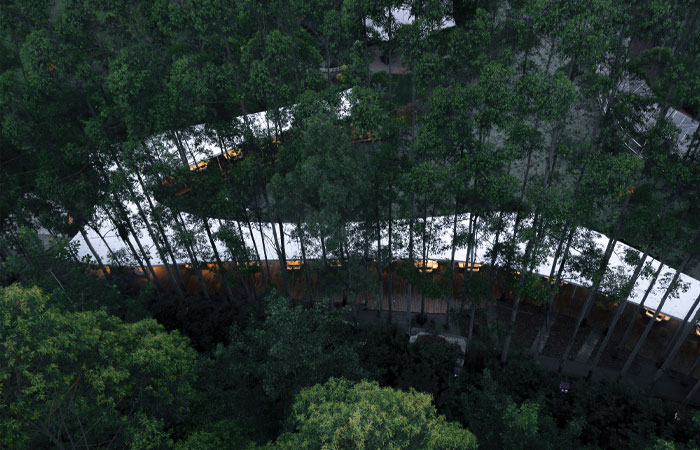
Of course, we’ve seen an increase in designers quite literally bringing nature into our interiors but cosmetics and beauty brand Glossier have taken this to new levels with their Seattle store, which won them the Small retail interior award. Bringing in the help of landscape designer Lily Kwong clearly had a huge impact upon the design, which incorporates rolling meadow-like partitions and backdrops filled with locally sourced flowers.
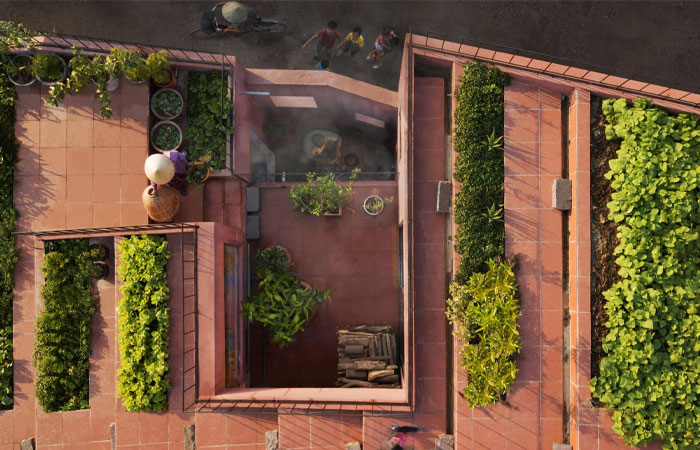
The judges recognised the impact this approach has had upon the retail space, noting, “It introduces an extra dimension to the notion of retail by serving as an art installation with community roots.” As we continue to take our tentative steps back into retail and shared public spaces such levels of detail and connections to nature would surely inspire greater level of confidence and comfort? Let’s hope this is just the beginning for such spaces.
